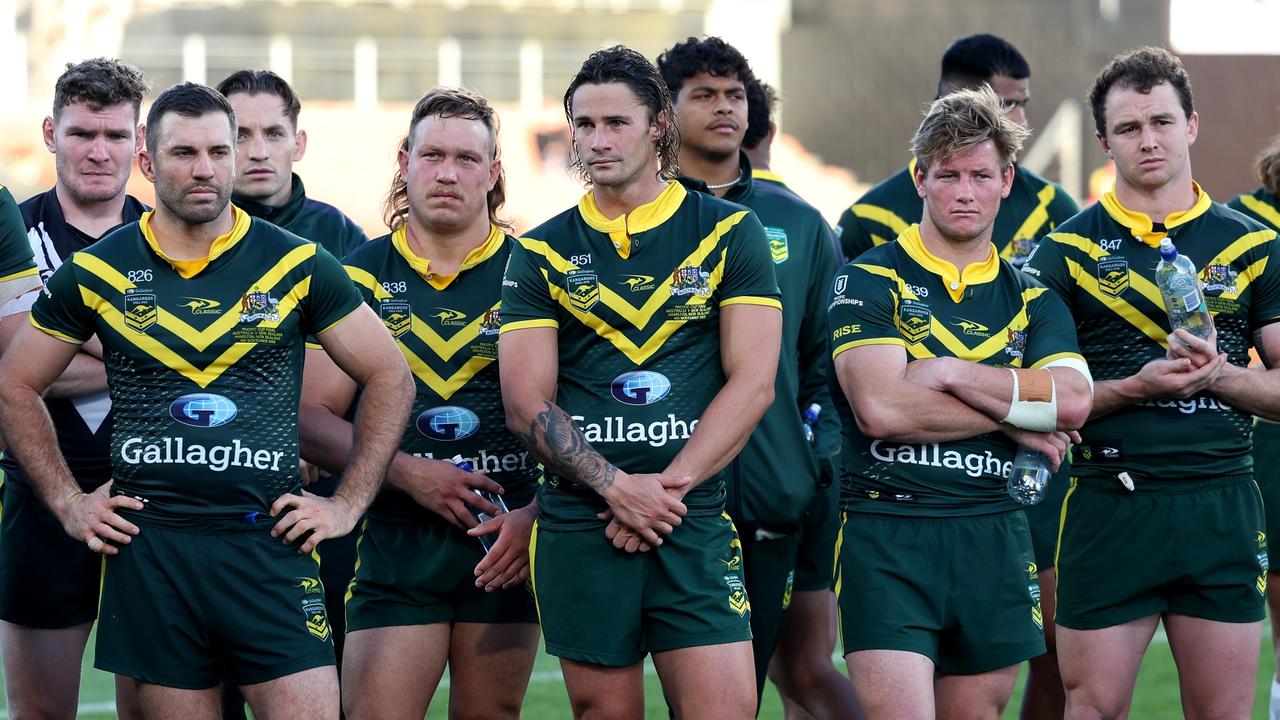Suncorp Stadium named the NRL ground with highest risk in player injury
It’s regarded as the best stadium for rugby league but the NRL’s Injury Surveillance Report has named the ground where footy players are most likely to be injured — and no, it’s not Brookvale Oval!

NRL
Don't miss out on the headlines from NRL. Followed categories will be added to My News.
It’s widely regarded as the best rectangular stadium for rugby league in Australia.
But ahead of the NRL’s historic Magic Round next season, Brisbane’s Suncorp Stadium is set for unprecedented scrutiny after recording the highest risk of injury by any venue in 2018.
Alarmingly, Suncorp recorded a higher risk of injury than perennial problem pitch Brookvale Oval, according the NRL’s Injury Surveillance Report for the 2018 season.
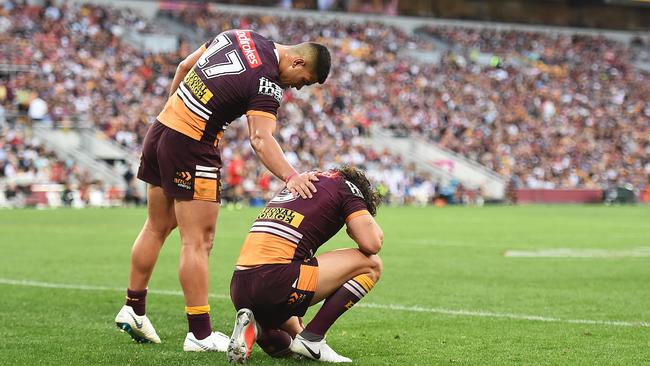
The study took in data provided from all 16 NRL clubs across the 439 players who participated in the 2018 season.
The Broncos’ home ground recorded an 8.0 per cent risk of injury to players — the highest in the NRL. Suncorp also recorded the equal highest average number of injuries per game (2.7).
Surprisingly, the relatively new Gold Coast Titans’ home of Cbus Super Stadium was narrowly behind Suncorp with 7.8 per cent risk of injury and equal on average number of injuries per game.
New Zealand’s Mt Smart Stadium was ranked the third most dangerous venue in the NRL with a 6.4 per cent risk of injury.
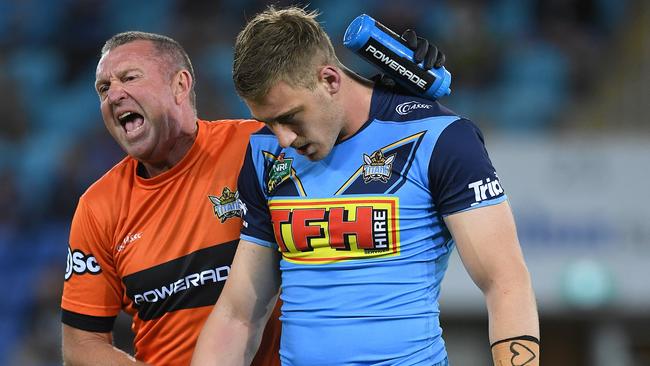
The Magic Round will be part of the NRL’s regular season for the first time next year.
All eight matches making up round nine will played at Suncorp over four days, beginning with the Titans versus Cronulla on Thursday, May 9.
NRL head of football Graham Annesley said he had full faith in the Suncorp ground staff to prepare a pitch that was safe for the players.
However, he conceded the impact of 16 teams over four days on a playing surface during an NRL season was exceptional and an obvious future focus for the code.
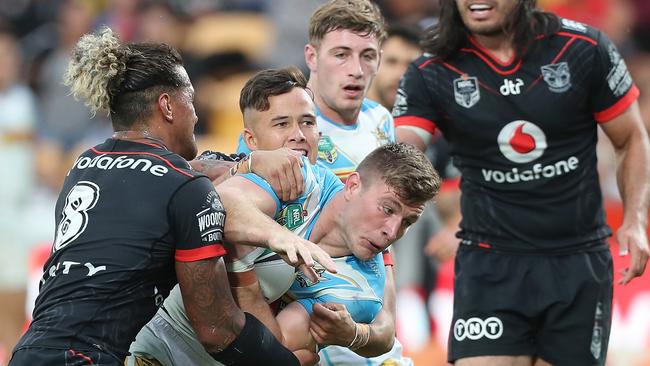
“There’s no question that Suncorp is a first-class stadium with a quality surface and on this occasion, I would think the (2018) figures are skewed by nothing more than bad luck,’’ Annesley said.
“Eight games over four days (next year) is an unusual amount of traffic and the weather will play a role in that as well.
“But we’ll definitely be talking to the venue about how of paramount, is the health and safety of the players.’’
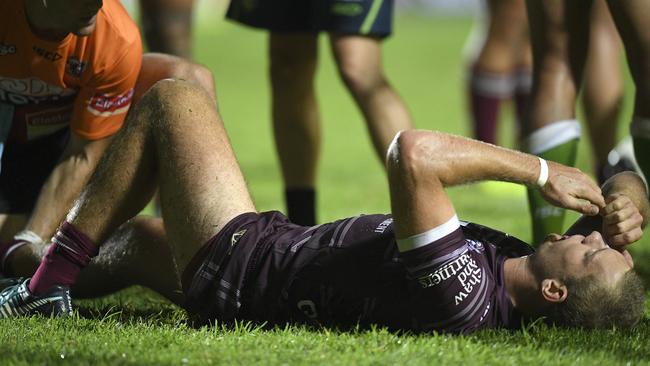
Long derided for being the NRL’s worst ground for it’s consistently boggy playing surface, Brookvale Oval, or Lottoland, did little to improve its poor reputation.
While falling behind Suncorp for risk of injury, Brookvale was responsible for players missing more games from injury (than any other venue, with 9.9 per cent of all games missed by players due to injury were as a result of playing on the northern beaches ground.
Newcastle’s McDonald Jones Stadium caused 3.8 per cent of the injuries which resulted in players missing games.
The aim of the NRL report, which was sent to every NRL club last Friday, was to identify the incidence, site, nature and risk factors of injuries sustained in the 2018 season that resulted in missed playing time and make comparisons to previous seasons.
The study revealed 88.6 per cent of NRL squad players suffered an injury in 2018.
Front-row forwards accounted for the highest incidence rate for injury, followed by backrowers.
Tackling an opposition player accounted for 31.3 per cent of all injuries.
The most common injuries to the body were to the head (23.5 per cent) followed by upper leg/thigh injuries second overall (17.4 per cent).

“One of those reasons those numbers are as high as they are is that there is so much more observation of those things now and they’re under so much more scrutiny than they ever were,’’ Annesley said.
“While there was a spike of head and neck injuries over the last few years that’s majorly because of increased scrutiny.
“We’re already seeing that start to taper off and then hopefully then reduce because there’s more things being done, particularly with HIA (head injury assessment) and next season we’re introducing medical spotter’s in the bunker.
“There’s also more training and qualifications of on-field trainers and education from the NRL about the impact of head injuries.
“We’re not so much concerned an increase in the numbers, as long as we are in identifying those incidents, we’re actually providing a safer environment for the players.’’
Every Test, ODI & T20I live, ad-break free during play and in 4K. Only on Foxtel. SIGN UP TODAY!


